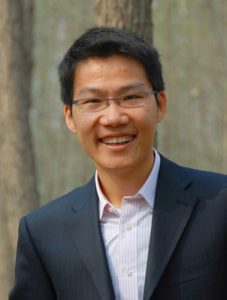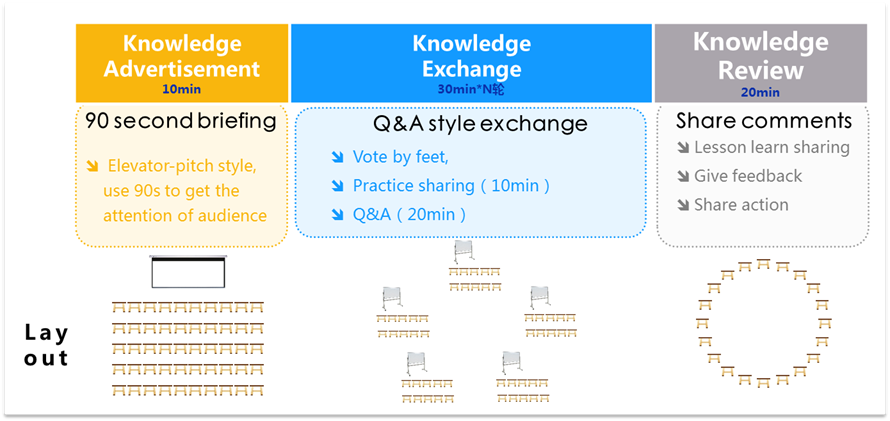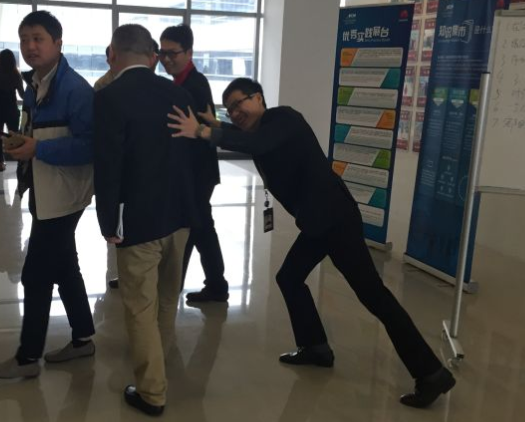Many conferences are a series of PowerPoint talks interspersed by the occasional panel discussion.
The audience gets a little time to ask questions, but they get absolutely no time to reflect or interact with each other besides in the coffee breaks or over lunch.
Not allowing time for conversation is a missed opportunity for the conference delegates to engage with the contents of the conference and learn from each other.
It is a missed opportunity for the delegates to become participants rather than an audience.
It need not be this way. This story by Frankie Lai, a Knowledge Manager with Huawei in Shenzhen, China provides a good example of what can be done to make a conference more participatory.

Each year at Huawei, we gather directors and managers from our branch offices all over the world to our headquarters office in Shenzhen, China for a 2-3 day global conference.
It is very costly, considering the air tickets and hotel accommodation for around 100 people, not to mention their salary and their travel allowance.
The traditional way we run a global conference is that we get these expensive people to sit in a meeting room and listen to speakers, normally the top management from headquarters, who share information with them that they could easily get from a Powerpoint presentation or a video.

What’s the point?
All these meeting attendees have great knowledge and insights but they are not given a chance to share that knowledge with each other.
How could it be done differently?
In the 2016 Global conference, I managed to convince my boss to allocate 3 hours for us run a Knowledge Market.
Before the conference, we talked to the regions and selected several good practices that were worth sharing.
The Knowledge market was divided into three sections.

Section 1: Knowledge Advertisement
Each good practice owner had 90 seconds only to convey a key message and the value of their practice to the others.
They could not just say ‘we did something good’, but had to say ‘Here is how my practice may be able to help you … ’
Section 2: Knowledge Exchange
In this section, the venue changes to an open area. The audience becomes knowledge hunters.
With limited time, they carefully select which booth to go to and ask the questions they care about the most.




Section 3: Knowledge Review
In this section, we got all the people back into several small meeting rooms and asked each group what they had learned, what lessons could they apply to their departments and what actions were they taking away with them from the market.
Frankie Lai
Knowledge Manager, Huawei Technologies, Shenzhen, China
The 2016 global conference was very successful and the Knowledge Market has become a routine part of our global conferences ever since.
Tweet This
Things Todo
- Think about how you might make your next meeting or conference more participatory.
POST NAVIGATION
CHAPTER NAVIGATION
SEARCH
Blook SearchGoogle Web Search
Photo Credits: Frankie Lai (CC BY 4.0) | Frankie Lai (CC BY 4.0)
The Gurteen Knowledge Letter is a free monthly newsletter with over 20,000 subscribers that I have been publishing by email for over 20 years.
Learn more about the newsletter and register here.

